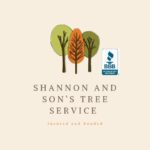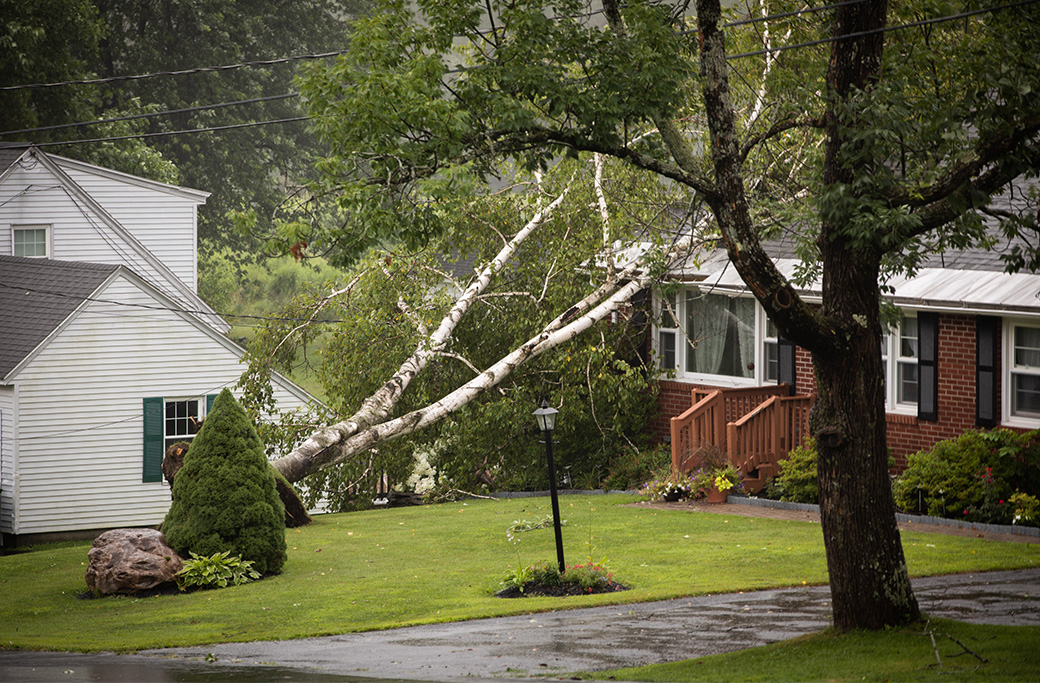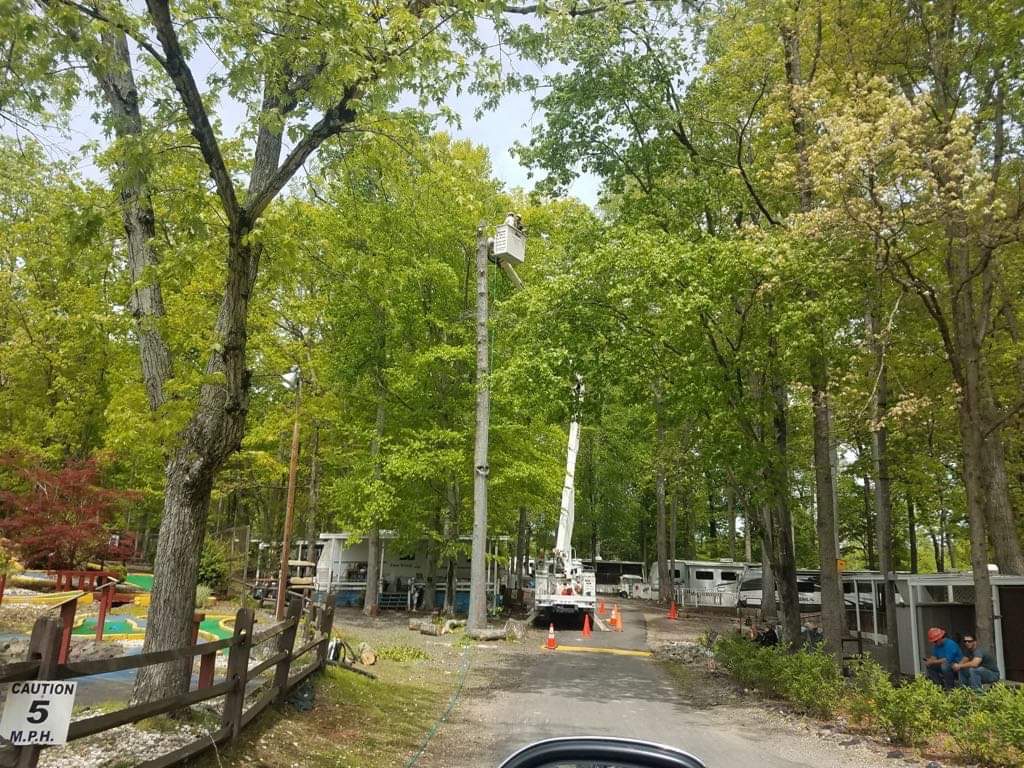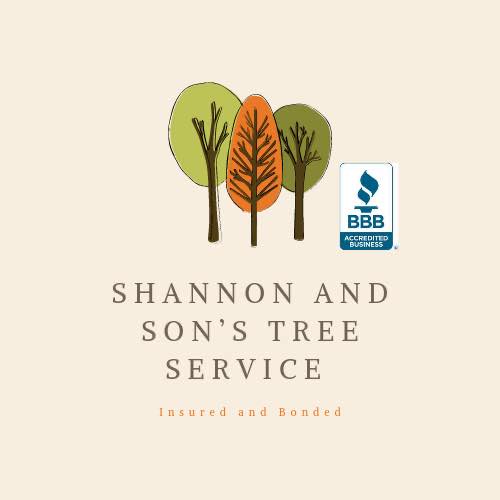When disaster strikes and a massive oak tree crashes through your roof during a Clemmons ice storm, or fallen limbs block your driveway after a severe thunderstorm, you need more than just standard tree service—you need emergency intervention. Emergency tree service makes all the difference between a manageable situation and catastrophic property loss or, worse, threats to your family’s safety.
Unlike routine tree care, which focuses on maintenance and aesthetics, emergency tree services operate around the clock to address immediate dangers. These situations demand a rapid professional response when trees pose an imminent risk to people, structures, or essential services like power lines. At Shannon & Sons Tree Service, we understand that when a tree emergency occurs in Clemmons or the surrounding areas, every minute counts in preventing further damage and ensuring your family’s safety.
What is a Tree Emergency?
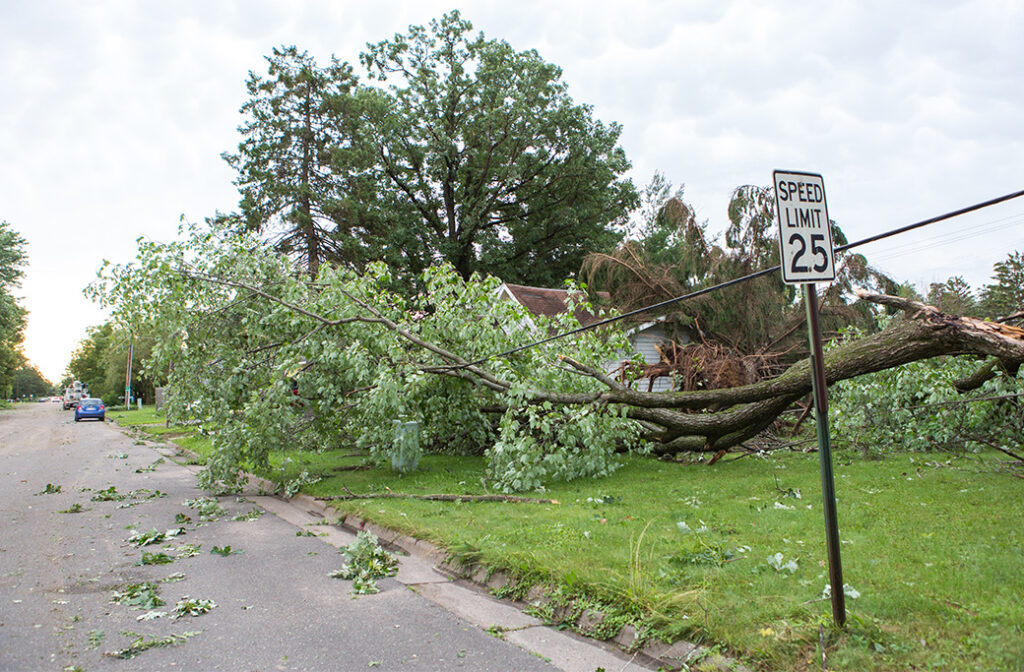
Tree emergencies involve situations requiring immediate professional intervention to prevent loss of life, additional property damage, or public safety hazards. These scenarios need urgent attention, not a scheduled appointment.
Trees or large branches that have fallen on homes, vehicles, or other structures are among the most common emergencies. The weight of a mature tree can cause significant structural damage, broken windows, roof collapse, or vehicle destruction. Even partial contact demands immediate assessment to prevent further collapse.
Trees blocking roadways, driveways, or emergency vehicle access routes create public safety emergencies. When fallen trees prevent ambulances, fire trucks, or police from reaching emergencies, rapid removal is vital for community safety. Many Clemmons residents have experienced blocked access after ice storms or severe wind events.
Trees or branches touching power lines create serious electrocution hazards for both residents and utility workers. These situations require a coordinated response between tree services and utility companies to safely restore power while protecting lives. Never attempt to address electrical line involvement yourself.
Partially fallen trees with unstable trunks pose ongoing threats of additional damage. These precarious situations can worsen quickly, especially with changing weather. Professional assessment determines whether stabilization or immediate removal provides the safest solution.
Large limbs hanging precariously after storm damage present an imminent fall risk. Ice accumulation, wind damage, or disease can leave heavy branches suspended by minimal connections, threatening anyone below and requiring immediate professional removal.
Trees leaning against buildings or other trees create structural instability that can rapidly worsen. The added pressure can damage both the leaning tree and what it rests against, potentially causing a domino effect of falling trees.
When to Call Emergency Tree Services
Understanding when to request emergency tree services versus waiting for regular business hours can mean the difference between minimal damage and catastrophic loss. Certain situations demand immediate professional response, regardless of time or weather conditions.
Contact emergency tree services immediately after severe weather events like hurricanes, ice storms, or high winds. Clemmons’ climate brings both winter ice storms and summer thunderstorms that can cause widespread tree damage. Professional crews mobilize quickly to address the most dangerous situations first.
When trees block access for emergency vehicles or prevent evacuation routes, immediate removal is essential. Fire departments, ambulances, and police must maintain clear access to residential areas. Emergency tree services coordinate with local authorities to prioritize these access routes.
If electrical lines are compromised by fallen trees or branches, contact both your utility company and emergency tree services. These situations require specialized coordination to safely de-energize lines before work can begin. Attempting DIY removal near power lines can be fatal.
When structural damage to buildings happens from fallen trees, rapid response prevents further deterioration. Roof damage can lead to water intrusion, foundation damage may worsen with settling, and broken windows create security vulnerabilities. Professional assessment and removal limit additional damage.
24/7 Emergency Tree Services
At Shannon & Sons, our emergency tree services are available 24/7 to handle urgent situations outside of normal business hours. These specialized operations require different equipment, personnel, and coordination than routine tree care.
-
- Rapid Mobilization: Our crews can be mobilized within hours of an emergency call, regardless of the time. At Shannon & Sons Tree Service, we have emergency response protocols that allow for rapid deployment. Our teams understand that tree emergencies don’t stick to a 9-to-5 schedule.
- Specialized Equipment: We use specialized equipment like cranes, bucket trucks, and high-powered chainsaws for complex removals that homeowners cannot safely attempt. Emergencies often involve trees in precarious positions, on structures, or near hazards that demand professional-grade machinery and skilled operators.
- Utility Company Coordination: We coordinate directly with utility companies for safe power line clearance. Our established relationships with local utilities ensure proper protocols are followed when electrical systems are involved, protecting both our crews and the public from electrocution hazards.
- Priority Assessment: Our emergency assessment protocols prioritize life-threatening situations first. Our certified arborists triage emergency calls to address the most dangerous situations immediately, scheduling less urgent removals appropriately. This systematic approach ensures our resources are allocated efficiently during peak demand.
Our Emergency Tree Removal Process
Professional emergency tree removal follows a systematic procedure designed to maximize safety and efficiently eliminate hazards. This process is different from routine removals due to unstable conditions and urgent timelines.
1. Initial Assessment and Safety Evaluation
Upon arrival, our certified arborists immediately evaluate structural damage and potential hazards. This assessment helps us determine the safest removal approach and identify complications like utility lines or unstable tree positions that require specialized techniques. We establish a safety perimeter around the area to protect crews and bystanders and use utility location services to identify any underground lines before work begins. We also provide professional damage documentation for property owners to use for insurance claims.
2. Safe Removal Techniques
We use strategic, sectional cutting to prevent further property damage by carefully controlling how tree pieces fall. For trees on structures or in confined spaces, crane assistance is essential to lift heavy sections safely away. Our teams also use advanced rigging systems with ropes and pulleys to precisely guide falling branches and trunk sections, even in tight spaces.
3. Cleanup and Debris Management
Our service includes complete debris removal—including branches, leaves, and trunk sections—to restore property access and eliminate hazards. We also offer same-day stump removal to eliminate tripping hazards and can assist with property restoration, such as lawn repair. All organic material is properly disposed of through chipping or municipal programs, so you aren’t left with a mess.
Common Emergency Scenarios in Clemmons
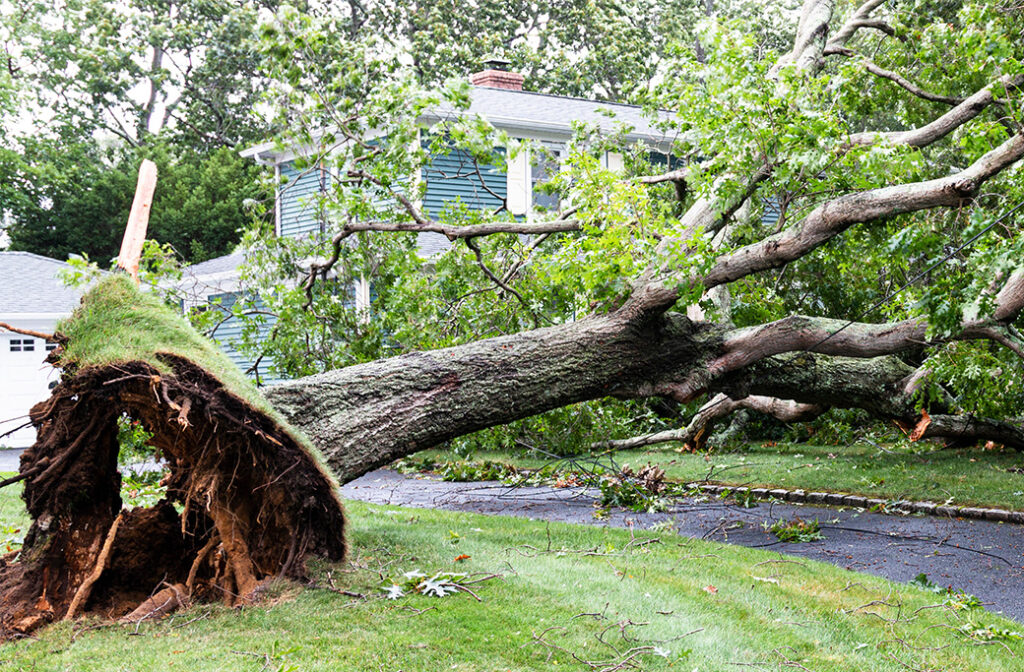
Clemmons and the surrounding areas experience weather patterns that can create predictable tree emergencies. Understanding these common situations helps property owners know when to call for professional help.
-
- Wind & Storm Damage: Severe thunderstorms and hurricanes can cause multiple trees to fall across residential areas, requiring a coordinated emergency response.
- Ice Storms: The weight of heavy ice can break even healthy branches, creating widespread falling limb emergencies that can continue long after the storm has passed.
- Hurricane Cleanup: When tropical systems move inland, they can leave behind extensive tree debris, blocking critical roadways and access routes.
- Tornado Damage: While less common, tornadoes create severe emergency situations with uprooted trees and scattered debris that require careful, individualized assessment.
- Single-Tree Emergencies: A tree weakened by disease or old age can fall unexpectedly during moderate winds or for no apparent reason, affecting individual properties year-round.
- Construction Accidents: If a tree is damaged by heavy equipment, it needs an immediate stability assessment, as even minor impacts can compromise its structure.
Safety During Tree Emergencies
Tree emergencies create hazardous conditions that require professional help. Attempting a DIY removal during an emergency significantly increases the risk of injury, property damage, or even death.
-
- Power Lines & Structures: Never try to remove trees near power lines or on structures yourself. Electrical hazards can be invisible, and trees on buildings have complex falling patterns that need professional rigging to manage safely.
- Keep a Safe Distance: Stay away from damaged trees, as they can fall unexpectedly. A professional can assess the area and determine a safe distance.
- Contact Utility Companies: If electrical lines are involved, contact your utility company immediately. They must verify the line status and work with the tree service to ensure safe removal.
- Avoid Walking Under Damaged Trees: Don’t walk under partially fallen trees or loose branches. An arborist can identify which areas are stable and which are not.
- Use Professional Equipment: Emergency situations often involve awkward cutting angles and unstable footing that require specialized equipment and expertise.
- Insurance Liability: Using a licensed and insured emergency service protects you from financial risk. DIY attempts may void your homeowner’s insurance coverage.
Working with Insurance After a Tree Emergency
Insurance coverage for emergency tree removal can vary. Proper documentation and choosing a professional service are key to a successful claim.
-
- Document Everything: Take photos of the damage before and after removal. A professional service can help you document everything correctly for your claim.
- Get a Professional Assessment: A certified arborist can provide an accurate valuation for your insurance claim and determine if the damage is covered.
- Coordinate with Adjusters: Established emergency tree services often work directly with insurance companies, which can help streamline the claims process.
- Keep Receipts: Invoices and receipts are necessary for reimbursement. A professional service will provide detailed invoices that separate emergency work from routine services.
- Understand Your Coverage: Insurance typically covers removal when trees damage structures but may not cover trees that fall in an open yard.
- Ask About Direct Billing: Some companies can bill your insurance directly, easing your financial burden during a stressful time.
Preventing Future Tree Emergencies
Proactive tree care is the best way to reduce the risk of emergencies and is far less expensive than emergency response and repairs.
-
- Regular Health Assessments: Have a certified arborist inspect your trees regularly to identify risks like disease, structural weaknesses, or environmental stress.
- Preventive Pruning: Proper pruning reduces wind resistance and removes weak branches that could fail during a storm.
- Strategic Removal: Removing diseased or structurally compromised trees under ideal conditions is safer and more cost-effective than waiting for them to fail.
- Cabling and Bracing: These support systems can extend the life of a valuable tree and reduce the risk of failure.
- Smart Planting: When landscaping, consider a tree’s mature size to avoid future conflicts with structures and utility lines.
- Seasonal Maintenance: Regular maintenance, like fall pruning and spring assessments, can address potential hazards before storm season arrives.
Shannon & Sons: Your Partner in Emergency Tree Services
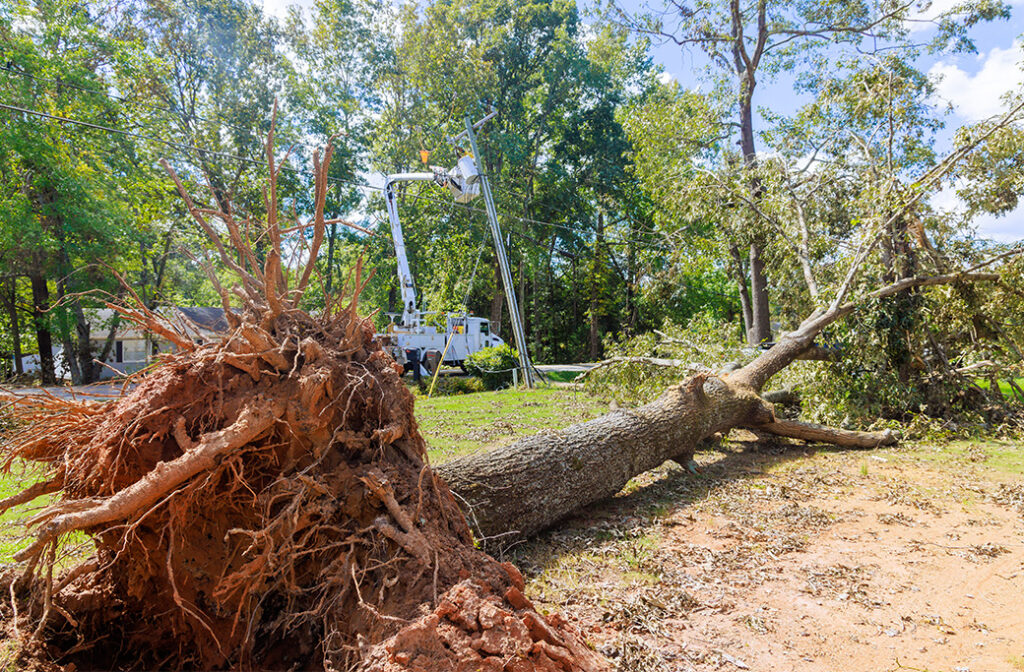
When a tree emergency strikes your Clemmons property, Shannon & Sons Tree Service has the expertise, equipment, and rapid response needed to protect your home and family.
Our certified arborists have years of experience with emergency situations in the Clemmons area. We understand how local weather, from ice storms to summer thunderstorms, affects different tree species and can lead to specific types of failures.
Shannon & Sons Tree Service offers comprehensive tree care, including professional inspections to identify risks before they become emergencies. Our preventive services, such as pruning, cabling, and bracing, can reinforce your trees and help them withstand severe weather. For trees that pose an unacceptable risk, we offer safe and efficient removal services that cost significantly less than an emergency call.
Our local expertise makes us a reliable partner for both emergency response and preventive care in Clemmons. We are committed to our community’s safety and providing timely, professional service when you need it most.
Emergency Tree Service in Clemmons, NC
Professional emergency tree services are essential when a storm-damaged or failing tree threatens your property. The specialized equipment, 24/7 availability, and expertise of certified arborists can prevent catastrophic damage. By understanding when to call for help, what to expect, and how to prevent future issues, you can make informed decisions about your property’s tree care.
Shannon & Sons Tree Service is your trusted partner for emergency tree services in Clemmons, NC. Our combination of rapid emergency response and proactive preventive care ensures your property stays protected all year round.
Don’t wait for the next storm. Contact Shannon & Sons Tree Service today for a consultation. Our professional assessment can identify potential risks and recommend measures to protect your property and keep your family safe.
